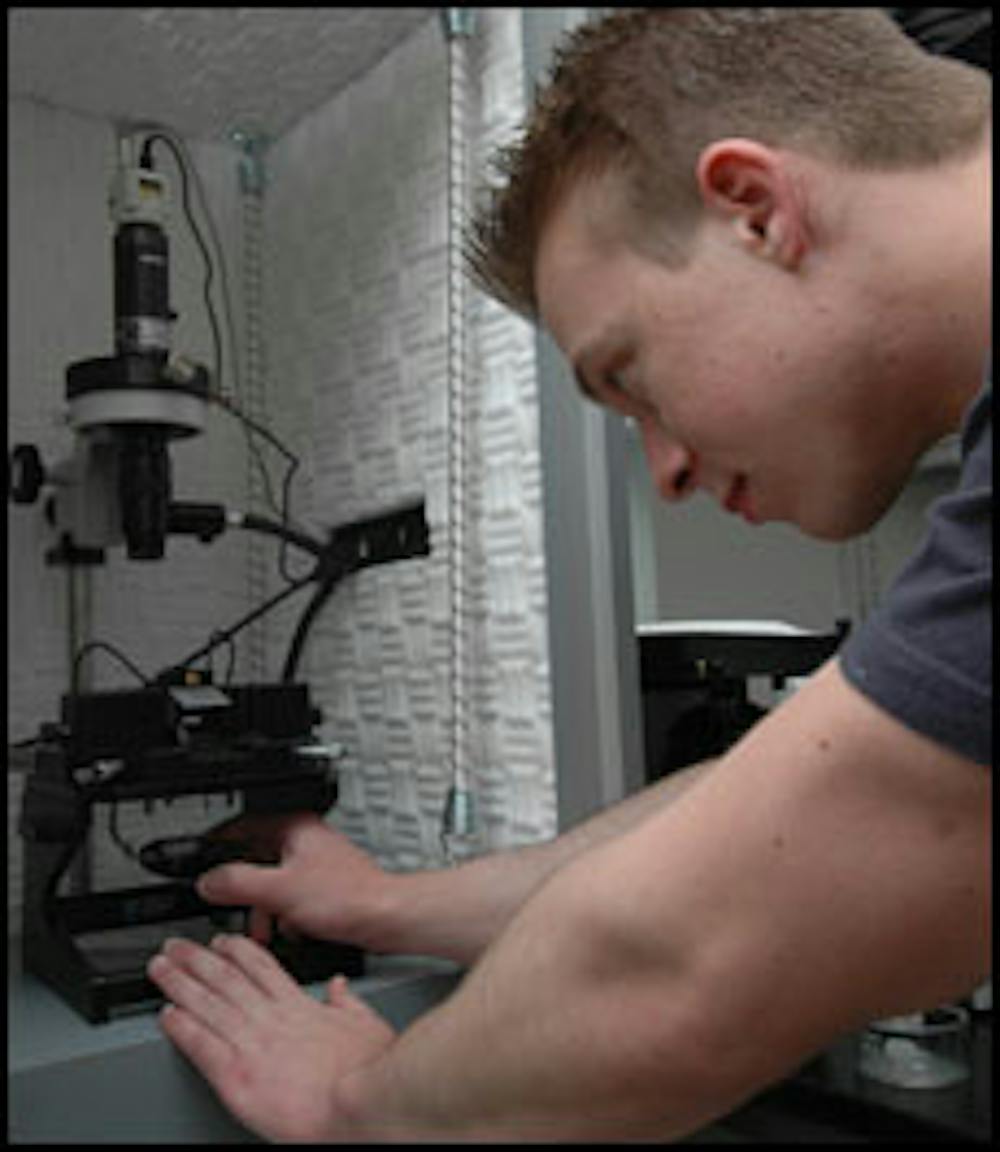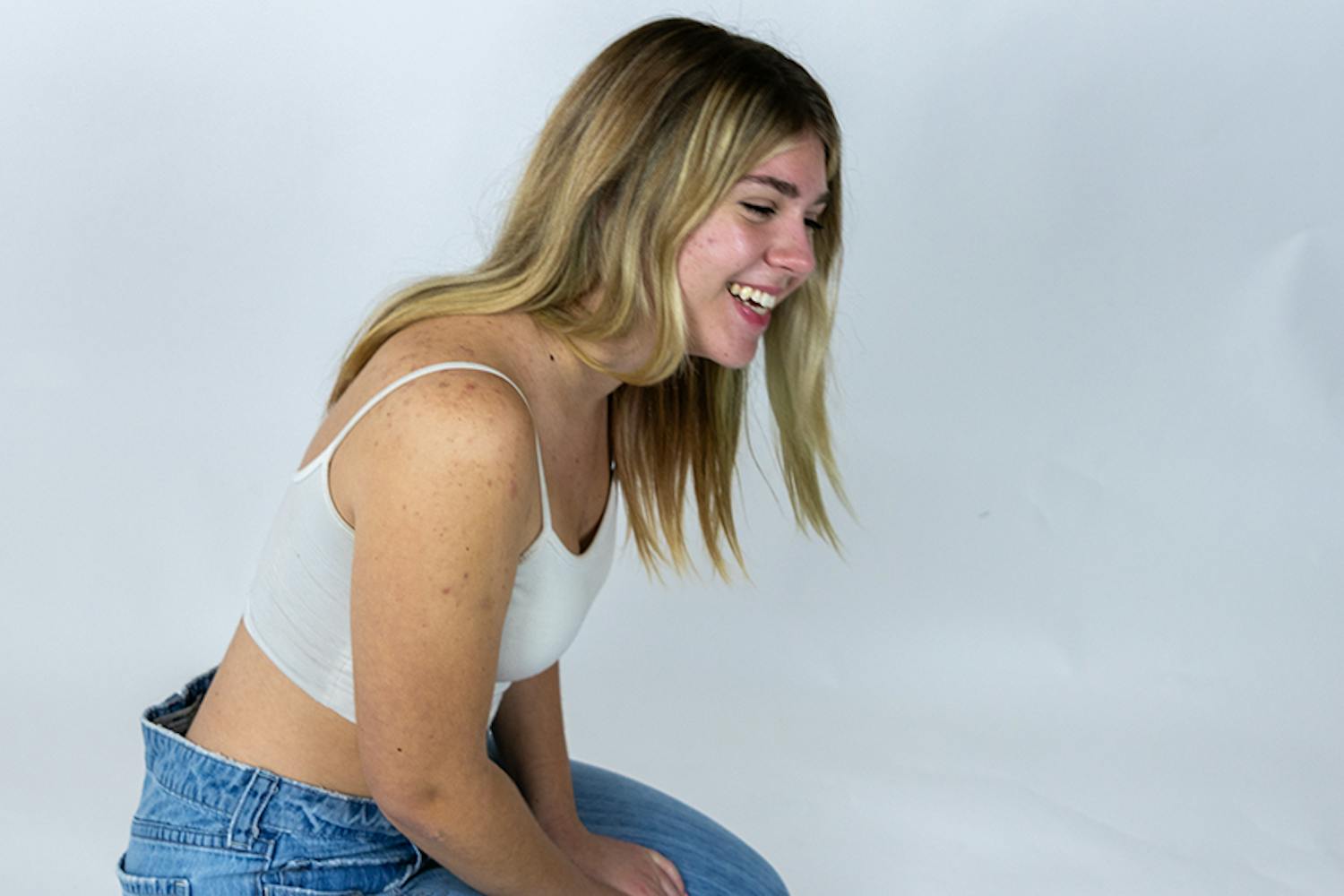A typical workday for biochemistry and molecular biosciences junior Marshall Reaves means bumping into biologists, analytical chemists and biochemists.
Reaves works at the Biodesign Institute, which was recently named R&D Magazine's 2006 Lab of the Year.
He said the institute's transdisciplinary environment is what makes it "so special."
Reaves works for the Center for Glycosciences and Technology.
"Here, ideas fly back and forth and everyone can build things together," he said.
Currently, the 350,000-square-foot facility is a learning ground for 84 undergraduate students, 69 graduate students and 65 postdoctoral associates.
Reaves said the glass-intensive building design creates a fishbowl effect.
"I'll be walking from one lab to another and spot a world-renowned scientist," he said. "I love that."
Reaves, recipient of a Department of Homeland Security education award, is working to generate human therapeutic proteins in plants that would mimic human-like sugar structures.
"We hope to produce plant-based, cheaper and safer medicines that would be available across the world," said Lokesh Joshi, glycosciences center director.
He added that being able to work on such projects is invaluable to students.
"We don't just teach them in classes," he said. "We teach them in a lab."
Physics junior Paul Schmit got involved with the institute last year.
"I asked my professor, Stuart Lindsay, to suggest a book to read for a circuits class," Schmit said. "And he said, 'Don't read a book. Come and work in my lab.'"
Now Schmit works under Lindsay, director of the Center for Single Molecule Biophysics. He recently earned a U.S. Department of Energy fellowship to do research in plasma physics at MIT this summer.
The research and development he's involved in would apply to nanotechnology, microbiology and disease or drug study, he said.
"It's as good an introduction as I can get to research as opposed to writing code," he said.
Lindsay credited ASU President Michael Crow and Biodesign Institute Director George Poste for creating something "that's the best of its kind and attracts the best talent."
The institute is forming partnerships that link on-campus research with organizations like TGen, said Jonathan Fink, vice president of Research & Economic Affairs at ASU.
"We want to attract leading companies to Phoenix," he added.
The master design of the institute, which includes two more buildings, will cost about $200 million. Raising the money could be a challenge, Fink said.
"We have to compete with other institutions and universities as everyone's trying to garner funds," he said.
Joshi also said he'd like more funding for the Biodesign Institute.
"The more funds you get the better," he said.
But for now, Reaves said he's honored to have this opportunity.
"We're not making cars or pencils or paper," he said. "We're extending quality of life."
Reach the reporter at sonu.munshi@asu.edu.




